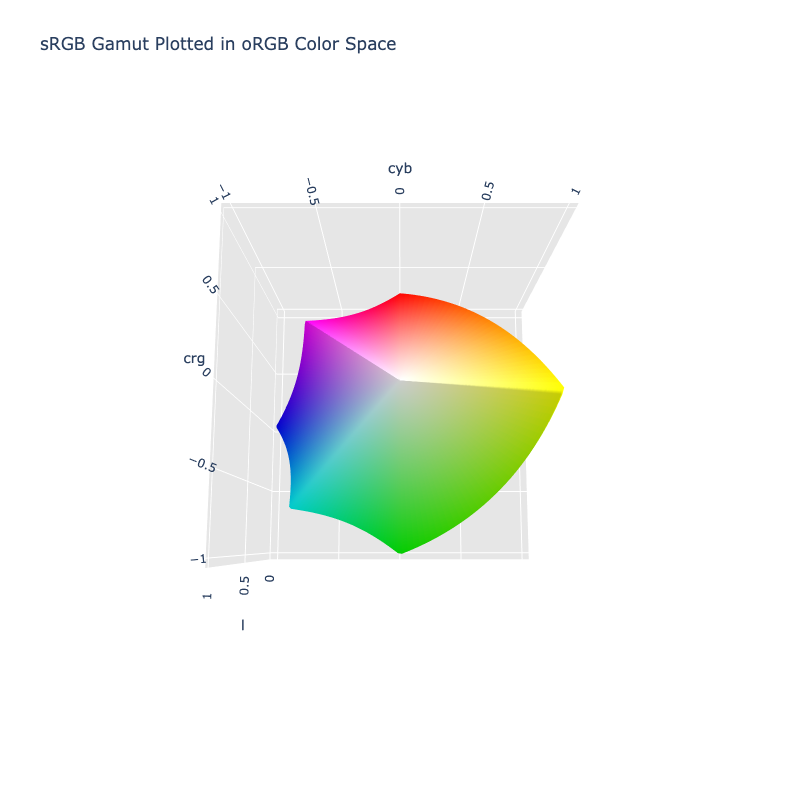oRGB
The oRGB color space is not registered in Color by default
Properties
Name: orgb
White Point: D65 / 2˚
Coordinates:
| Name | Range* |
|---|---|
l | [0, 1] |
cyb | [-1, 1] |
crg | [-1, 1] |
* Range denotes in gamut colors, but the color space supports an extended range beyond the gamut.

The sRGB gamut represented within the oRGB color space.
A new color model that is based on opponent color theory. Like HSV, it is designed specifically for computer graphics. However, it is also designed to work well for computational applications such as color transfer, where HSV falters. Despite being geared towards computation, oRGB's natural axes facilitate HSV-style color selection and manipulation. oRGB also allows for new applications such as a quantitative cool-to-warm metric, intuitive color manipulations and variations, and simple gamut mapping. This new color model strikes a balance between simplicity and the computational qualities of color spaces such as CIELab.
Channel Aliases
| Channels | Aliases |
|---|---|
l | luma |
cyb | |
crb |
Input/Output
The oRGB space is not currently supported in the CSS spec, the parsed input and string output formats use the color() function format using the custom name --orgb:
color(--orgb l cyb crb / a) // Color function
The string representation of the color object and the default string output use the color(--orgb l cyb crg / a) form.
>>> Color("orgb", [0.299, 0.00002, 0.99998])
color(--orgb 0.299 0.00002 0.99998 / 1)
>>> Color("orgb", [0.67882, 0.75654, 0.4464]).to_string()
'color(--orgb 0.67882 0.75653 0.4464)'
Registering
from coloraide import Color as Base
from coloraide.spaces.orgb import oRGB
class Color(Base): ...
Color.register(oRGB())